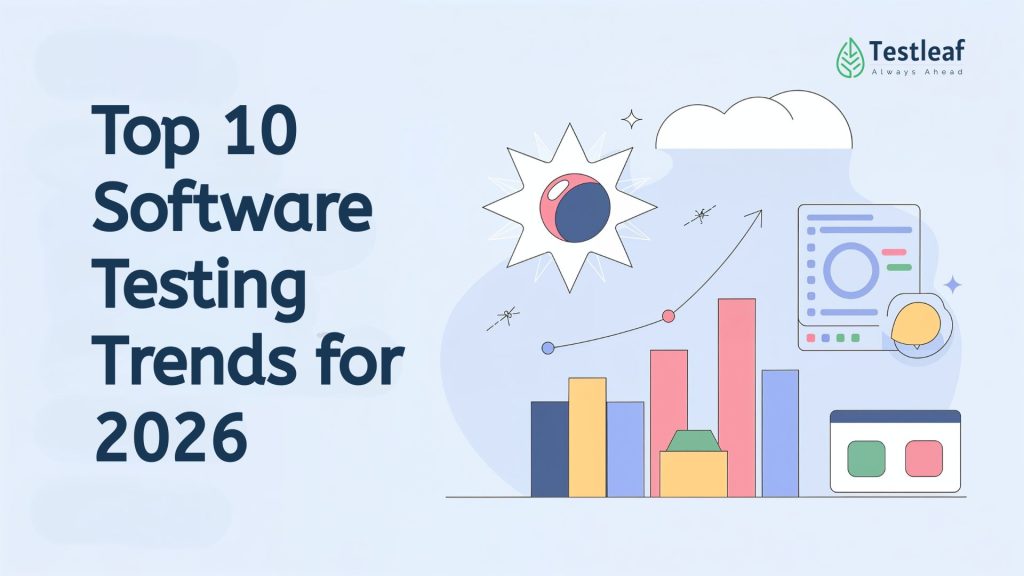2025 was about hyper-automation, low-code tools and shifting testing earlier.
2026 goes one step further. Now the focus is on AI-first quality, testing AI itself, and using real user signals to drive every quality decision.
This guide is written for testers who want to stay employable, relevant and in-demand over the next few years.
1. AI-First QA: Agents as Your New Test Assistants
In 2026, AI is no longer just “a feature” in tools. Many teams use AI agents that can read requirements, generate flows and explore the product on their own.
What this means for you
· You design the intent and guardrails.
· The agent runs scenarios, generates logs and suggests defects.
· Your role shifts from doing every click to reviewing, guiding and improving AI output.
Learn how to give clear prompts, add context and ask AI to explain why it suggested something. That skill matters more than memorising every tool UI.
Further Reading: api testing interview questions
2. Testing AI and LLM Features as a Core Skill
Earlier, we tested forms and flows. Now we test chatbots, copilots and recommendation engines that behave differently for every user.
Key focus areas
· Prompt-based test cases (normal, edge, and abuse prompts).
· Acceptance criteria for AI answers: accuracy, safety, tone and bias.
· Guardrails: how the system blocks harmful or private content.
This is one space where a software testing course online that covers AI and LLM testing can give you a big edge over other testers.
3. From Shift-Left to “Designing for Testability”
Shift-left is now the baseline. The next step is designing systems that are easy to test.
You’ll see more of
· Testability reviews in design discussions.
· Clear contracts for APIs and events from day one.
· Built-in feature flags, logs and diagnostics.
Testers who can read a simple architecture diagram and ask “how will we test this?” become key voices in the team.
4. Shift-Right and Quality Observability
Bugs in production are still bugs. But in 2026, they are also data to learn from.
What changes
· Testers use dashboards, traces and logs as part of daily work.
· Real user behaviour inspires new test scenarios.
· Quality reports include both pre-release and live metrics.
If you can read a basic dashboard and connect spikes, drops or errors back to scenarios, you move closer to a quality engineer role, not just “tester”.
Additional Resources: epam interview questions
5. API-First, Event-Driven and Contract Testing
Modern systems are built around APIs, events and microservices. UI-only testing is not enough.
· API-first development, where APIs are defined before UI.
· Event-driven flows that cross many services.
· Contract testing to keep teams aligned and avoid breaking changes.
Strong API and contract testing skills will matter more in 2026 than knowing yet another UI automation tool.
6. Internal Test Platforms and “Quality as a Service”
Many organizations are building internal platforms that provide environments, pipelines and test utilities as a service.
What testers get
· One place to trigger suites, provision data and see results.
· Reusable templates for performance, security and regression runs.
· Standard quality gates across teams.
You don’t have to build these platforms. But you should learn how to influence what goes into them and ensure they support the kind of testing your product really needs.
7. Continuous Performance and Resilience, Not Just Speed
Performance is no longer only about “under 2 seconds”. Teams care about how systems behave when things go wrong.
Expect more
- Smaller, frequent performance checks in CI pipelines.
- Chaos-style experiments: killing services, adding latency, throttling APIs.
- Reliability SLOs (error budget, uptime, latency) in quality reports.
If you can read a simple performance graph and suggest where to look next, you become a bridge between QA, DevOps and SRE.
Further Exploration: api automation testing interview questions
8. Everyday Security and Privacy Testing
Security is moving from one annual pen test to every sprint, every release.
For testers this means
- Basic checks for auth, roles and data access on every story.
- Verifying that logs, screenshots and exports don’t leak sensitive data.
- Working with security teams on simple threat scenarios.
An Online software testing course that includes basic security concepts can help you speak the same language as security engineers and add more value in reviews.
9. Smarter Test Data and Synthetic Data at Scale
Copying production databases is no longer acceptable in many domains. 2026 is about smart, safe and realistic test data.
Key ideas
- Synthetic data that looks real but protects privacy.
- Smaller, focused data sets aligned to specific journeys.
- Automated refresh of data so tests stay reliable.
Testers who can define “what good test data looks like” for login, payments, search, and reports will stay in high demand.
10. Accessibility, Multi-Device and Inclusive UX Testing
Accessibility is gaining legal and business weight. At the same time, users switch between mobile, web, tablet and even TV apps.
Trends to watch
- Accessibility checklists built into regular test cycles.
- Testing with screen readers, keyboard-only flows and different input modes.
- Cross-device journeys where a user starts on mobile and finishes on desktop.
Inclusive testing is not just about compliance; it directly improves user satisfaction and brand trust.
Conclusion: Turn Trends into a 2026 Learning Plan
You don’t need to master all ten trends in one shot. Pick two or three that match your current project and build a simple learning roadmap around them: a bit of AI testing, some API and contract testing, plus a small step into observability or security.
If you prefer guided learning with practice, look for a software testing course in chennai that blends core testing, automation and modern skills like AI, API and performance. Local mentoring plus hands-on work will help you turn these 2026 trends into real career growth, not just theory you read in a blog.
FAQs
1. What are the top software testing trends for 2026?
AI-first QA, LLM testing, shift-right observability, contract testing, synthetic test data, continuous performance, and accessibility are among the biggest 2026 trends.
2. Why is AI-first QA important for testers in 2026?
AI agents now generate test flows, analyze logs, and uncover defects. Testers must learn how to guide and validate AI outputs effectively.
3. What is shift-right testing in 2026?
Shift-right includes using production logs, traces, and real user behavior to create smarter test scenarios and improve post-release quality.
4. Do testers need API and contract testing skills in 2026?
Yes. Modern systems rely on microservices and event-driven architecture, making API-first and contract testing essential skills.
5. Why is synthetic test data important?
Synthetic data removes privacy risks and helps create stable, reusable, realistic test sets that increase automation reliability.
6. Is accessibility testing becoming mandatory?
Yes. Legal, business, and customer experience priorities make accessibility and inclusive UX testing a must-have skill.
We Also Provide Training In:
- Advanced Selenium Training
- Playwright Training
- Gen AI Training
- AWS Training
- REST API Training
- Full Stack Training
- Appium Training
- DevOps Training
- JMeter Performance Training
Author’s Bio:

Content Writer at Testleaf, specializing in SEO-driven content for test automation, software development, and cybersecurity. I turn complex technical topics into clear, engaging stories that educate, inspire, and drive digital transformation.
Ezhirkadhir Raja
Content Writer – Testleaf









